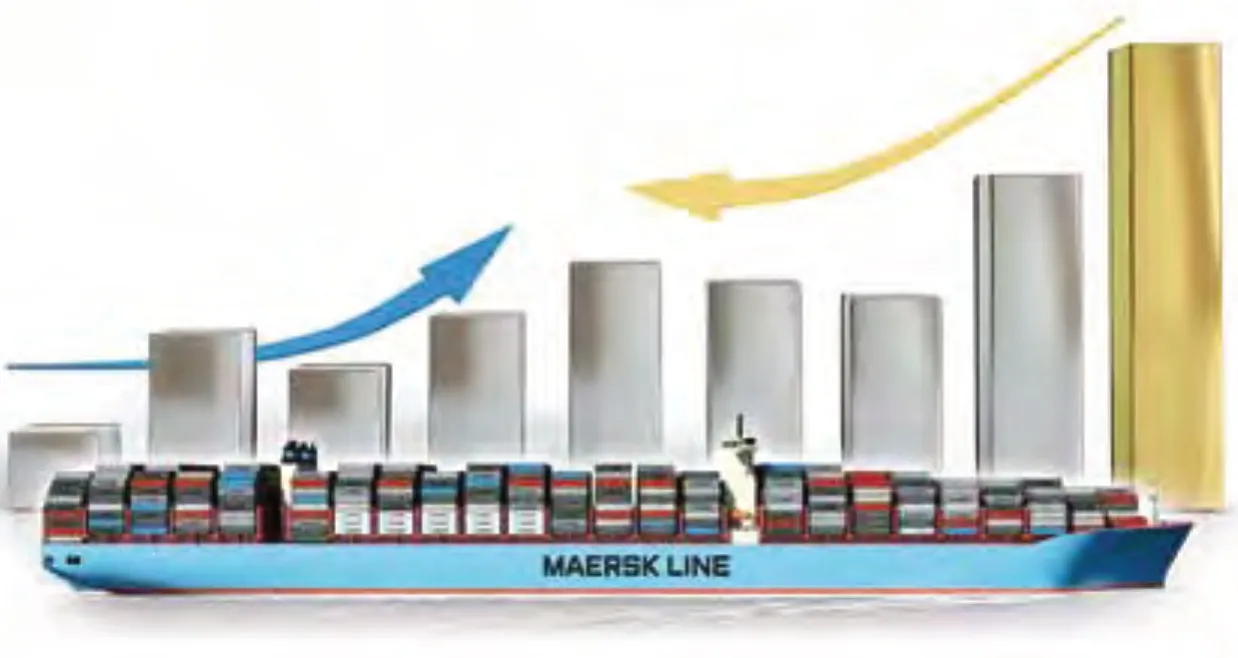Positive and Negative Effects of Cost Cut for Huge Vessels
2015-05-30ByZhangMengxiYanEnhuiJiangNanchun
By Zhang Mengxi & Yan Enhui & Jiang Nanchun

The cost cut related to vessel enlargement several decades before is considerable.However, with vessels becoming larger and larger, the amount of cost cut is decreasing. Researches show that at early stage of vessel enlargement,before the vessel size was upgraded to 5000 TEU, increasing ship capacity was a common way to save unit cost. Nearly half of the cost saving per TEU was benefited from vessel enlargement. However,when the vessel size was upgraded to over 5000 TEU,the amount of cost saving decreases. Analyses show that the tendency of cost saving reduction does synchronize with introduction of new container vessels. According to Clarkson, cost saving by increasing the ship capacity from 15000 TEU to 19000 TEU only equates with 1/6-1/4 of the cost saving by increasing the capacity from 5000 TEU to 5000 TEU when the vessel speed is assumed the same.
Calculation shows that vessel enlargement only brings limited cost saving, that is the diseconomy related to class replacement.
Cost saving of large vessels relies on capacity utilization rate to a great extent. In the article of Does scale economic effect of large container vessels can be calculate ?, Grimstad and Neumann Larson indicated that cost advantage of large vessels may be offset only if the capacity utilization rate is decreased by 3%~5%,
It is difficult for liner companies to achieve such a high capacity utilization rate. In reality, the loading rate achieved by most vessels is even lower. For example,monthly capacity utilization rate of Asian-Northern Europe route fluctuates between 65% to 100%, for other trade routes, it is even lower.(For example, Asian-Africa reaches only 52% in Jan. 2015.)
However, there is big difference between carriers and the alliance.
In addition, vessel enlargement has effects on the onschedule rate and service frequency, which are still a constructive challenge for the container shipping industry that remains unsolved for the time being.
Container ship enlargement develops with the trend of industrial consolidation. The predominant idea in the industry is to pursue scale economy via enlarging company scale so that even larger vessels will be affordable. Industrial consolidation includes mergence and alliance. There was a mergence case in recent years, Hapag-Lloyd annexed CSAV in 2014. However industrial alliance is the main trend. In 2011, there were 3 alliances and 6 independent carriers. In 2015, there are four Great alliances of 2M, O3, G6 and CKYHE, taking eighty percent of market share.
This has resulted in many problems in shipping industry.Proposal of P3 alliance was rejected by China's Ministry of Commerce in 2014. Then, FMC made its position on 2M known, a committee member voted against. To a certain degree, It is believed that the alliance protects industrial dispersion and smaller companies. In addition,it's worth noting that centralization degree of container shipping industry is not very high, compared with other industries.
Though the industry is on the way of integration, many companies are still confronted with the difficulty of making profit. In 2014, only half of giant container carriers made profit. Except MSK, MSC and CMACGM, only few participants of market segment made profit, such as WHL and OOCL. In pursuit of scale economy, container shipping companies invested in large ships and the debts went up over years. Experts from BCG and McKinsey indicate that a new integration is necessary to achieve larger economic scale and more profit. The scope of cooperation should cover onshore logistics system to form the so-called "Smart alliance".
